Classically conceptual: Sebastian Brajkovic’s Vanishing Point makes the impossible real
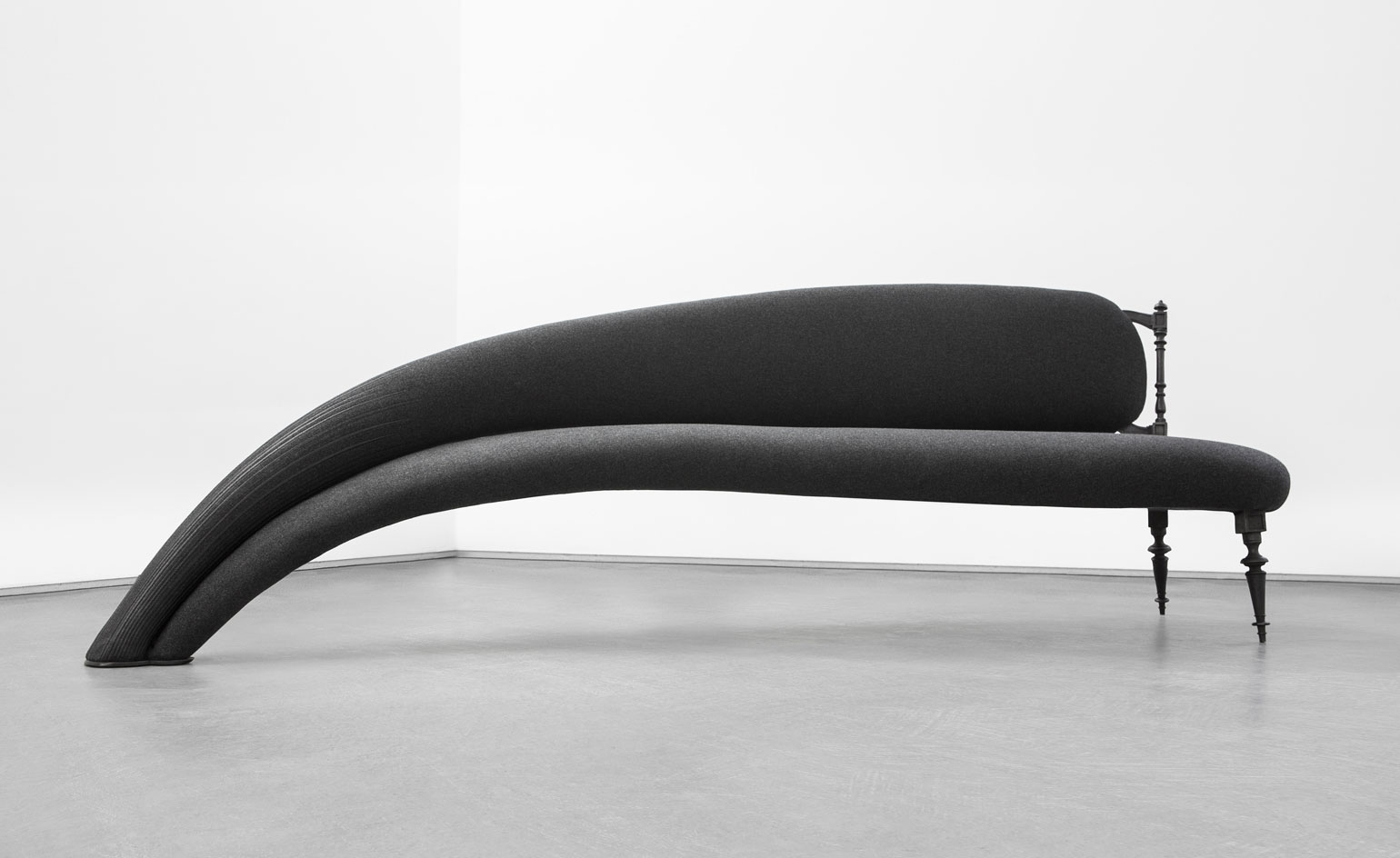
Shortly before people crowded into Carpenters Workshop Gallery's Paris space to view Sebastian Brajkovic's latest series, the Dutch designer stood facing Vanishing Point IV and said, 'At some point, you have to sit on it.' Which he proceeded to do, as if to prove that the piece neither flipped over or sucked him into a vortex beneath the floor. 'Basically, I make sculptures but they have to be practical,' he explained.
To look at the work is to see an eighteenth century court chair elongated and distorted, sloping downward so that it simultaneously becomes a sofa and an optical illusion. If this is furniture, it is also a folly that invites a new way of thinking about perspective.
Brajkovic, who is now based in Paris, says he arrives at his overlap of classical and conceptual by thinking beyond his comfort zone. 'I ask if it's possible physically to make a piece like this. That's what you often find in sculpture; you see the impossibility. I try to show this tension in these works.'
As with his previous series, Lathe, Brakjovic roots his work in exceptional craftsmanship, from the patinated bronze chair frames to the silk embroidery atop cashmere wool. With Fibonacci, he elevated the elements further still, working with haute couture embroiderer Maison Lesage to achieve the raised, concentric patterning. Against the neutral toile, the metallic tracks of copper and silver catch the light and animate an already whimsical design. 'That was a long-term wish,' he said of collaborating with the couture embroiderer. 'I thought it would be exquisite if the [motif] started to live outside the fabric.'
Fibonacci, of course, gets its name from the Italian mathematician whose number sequence is closely related to the golden spiral, which is represented in nature by seashells and cyclones alike. Brajkovic's chair, meanwhile, presents the seat and back converging to replace two legs with a curling double tail. Instead of clay, he used 3D printing to create the cast. 'I had to be strong with this piece; there was a possibility that I wouldn't go on with it,' he confessed, relieved that it came out stable.
Where Fibonacci appears on a podium like a singular statue, two additional works share a section of the gallery with more reserve. Conversation Piece reimagines the confidante triangular arrangement so that all three seats are offset side-by-side and propped up by 8.5 legs (one doesn't reach the ground). Sleipnir, ostensibly a bench (its name refers to an eight-legged horse from Norse mythology), looks like it might gallop off when no one is looking.
Altogether, the five pieces stand as some sort of surrealist proposition with any number of possible readings; does the lozenge-shaped embroidery represent animal scales or an homage to M.C. Escher? Do the double spindles on both Vanishing Point pieces convey a glitch in time or a warped effect à la Francis Bacon (Brajkovic cited the artist as a strong influence)? 'I totally respect the spectators' ideas,' he insisted, before adding. 'These pieces are purely my expression of beauty; that's the sole message.'
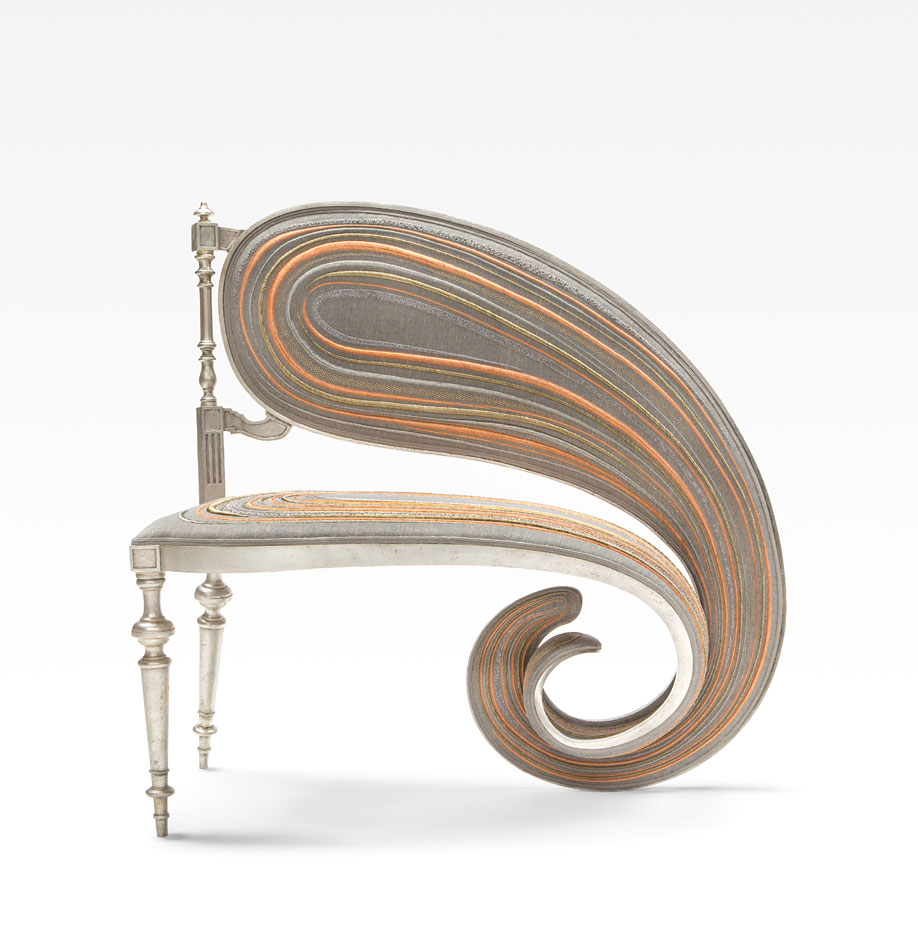
Fibonacci, Brajkovic's chair, presents the seat and back converging to replace two legs with a curling double tail
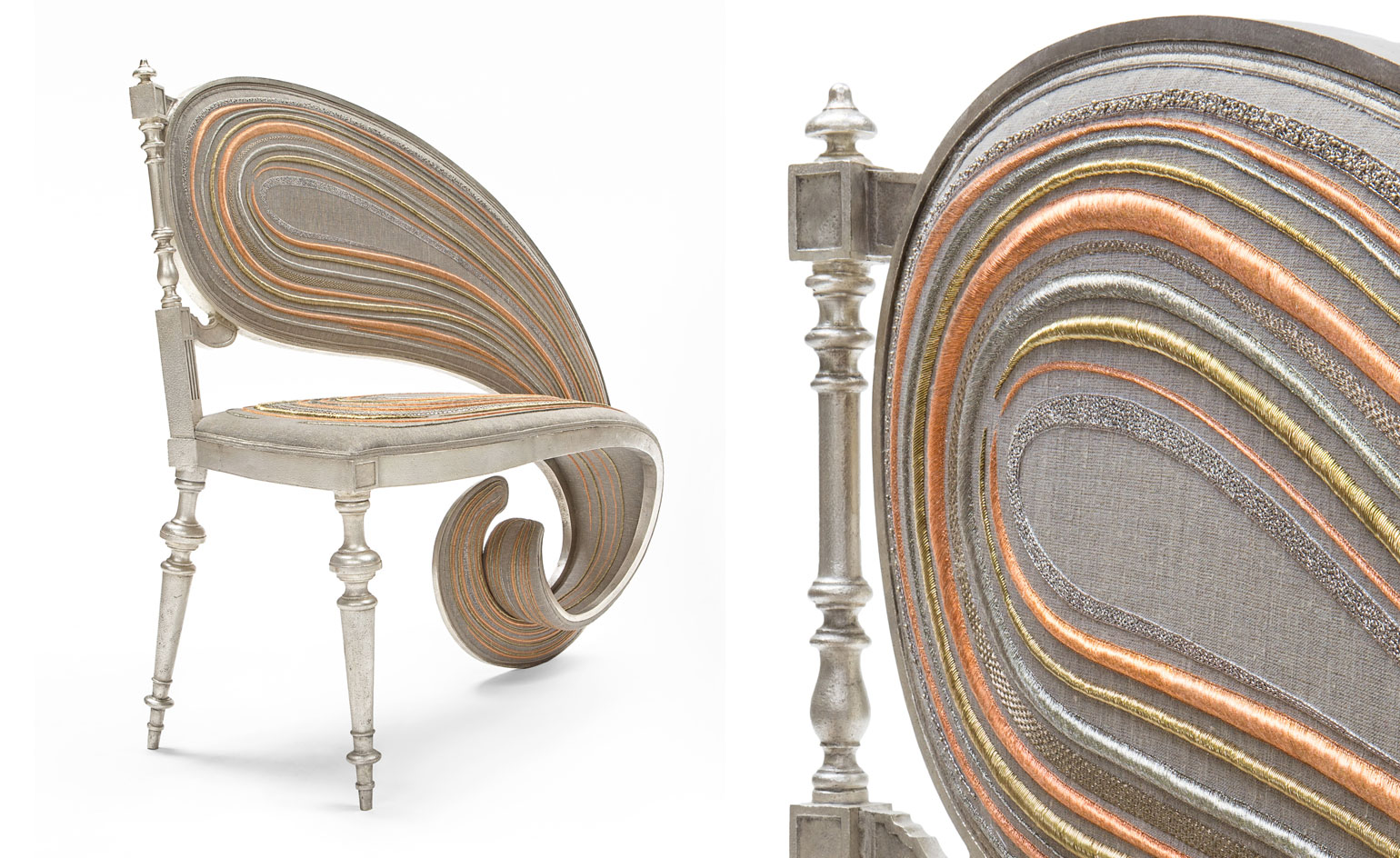
Made using a 3D printer for the structure, Brajkovic's embellished the chair with the help of haute couture embroiderer Maison Lesage, achieving a raise, concentric patterning
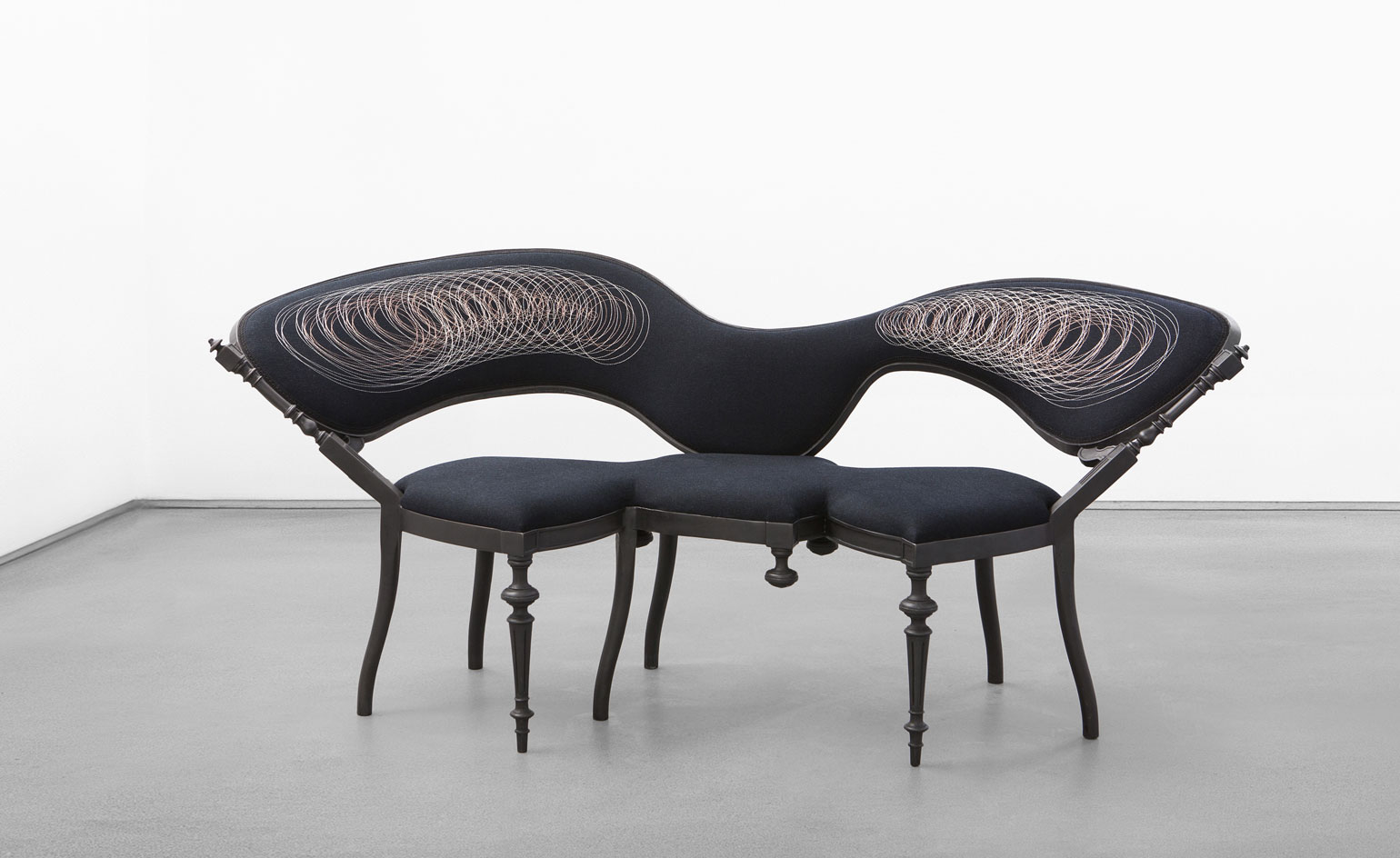
Conversation Piece reimagines the confidante triangular arrangement so that all three seats are offset side-by-side and propped up by 8.5 legs
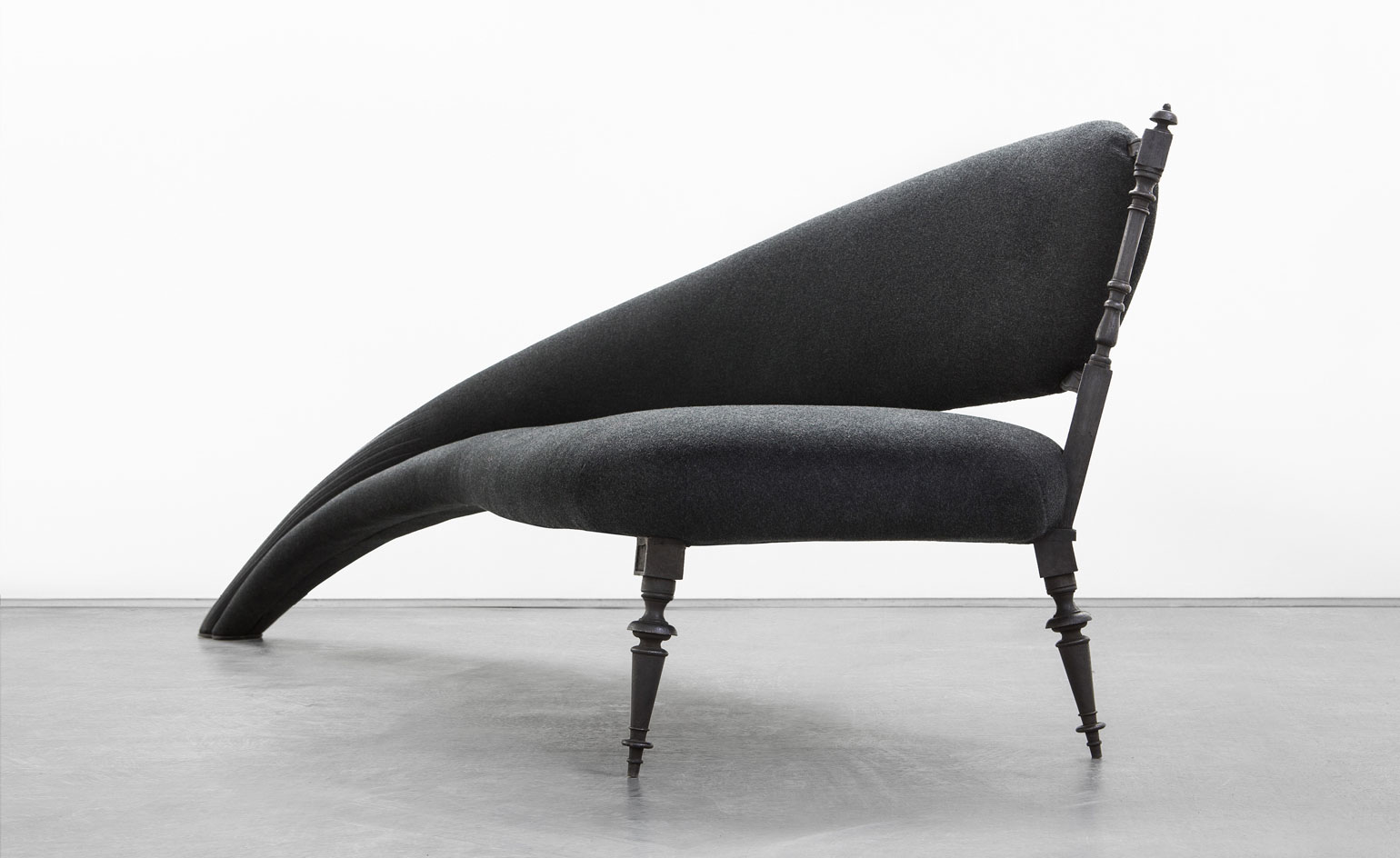
The Dutch designer challenges the physical constraints of reality with his mind warping sculptures

Named after an eight-legged horse from Norse mythology, the Sleipnir bench looks like it might gallop off when no one is looking
ADDRESS
Carpenters Workshop Gallery
54 rue de la Verrerie
Paris, France
Wallpaper* Newsletter
Receive our daily digest of inspiration, escapism and design stories from around the world direct to your inbox.
-
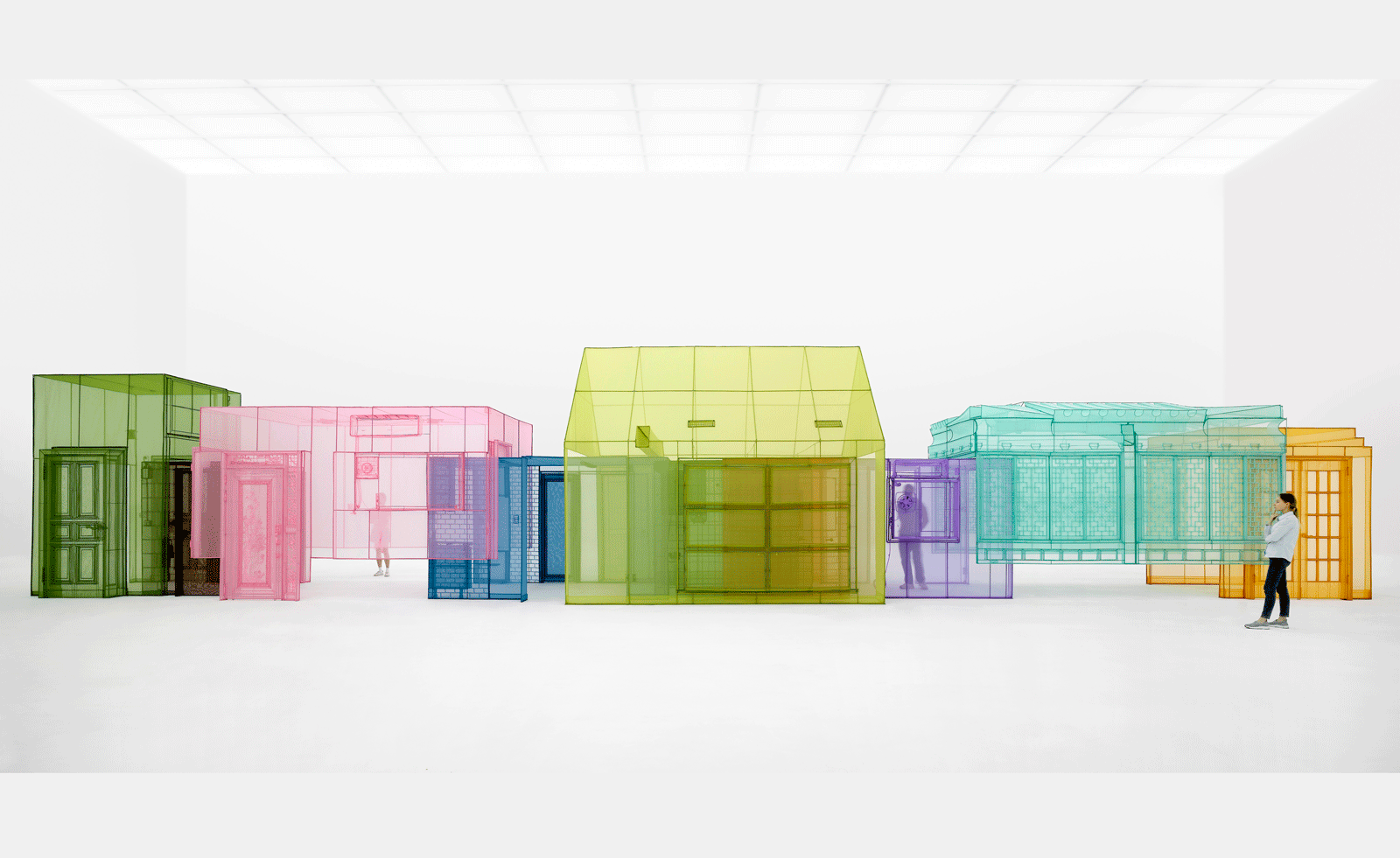 Do Ho Suh is searching for home in a major new exhibition at the Tate Modern
Do Ho Suh is searching for home in a major new exhibition at the Tate ModernDo Ho Suh's exhibition, 'Walk the House' at Tate Modern, sees the South Korean artist recreate his homes from Seoul, New York, London and Berlin.
-
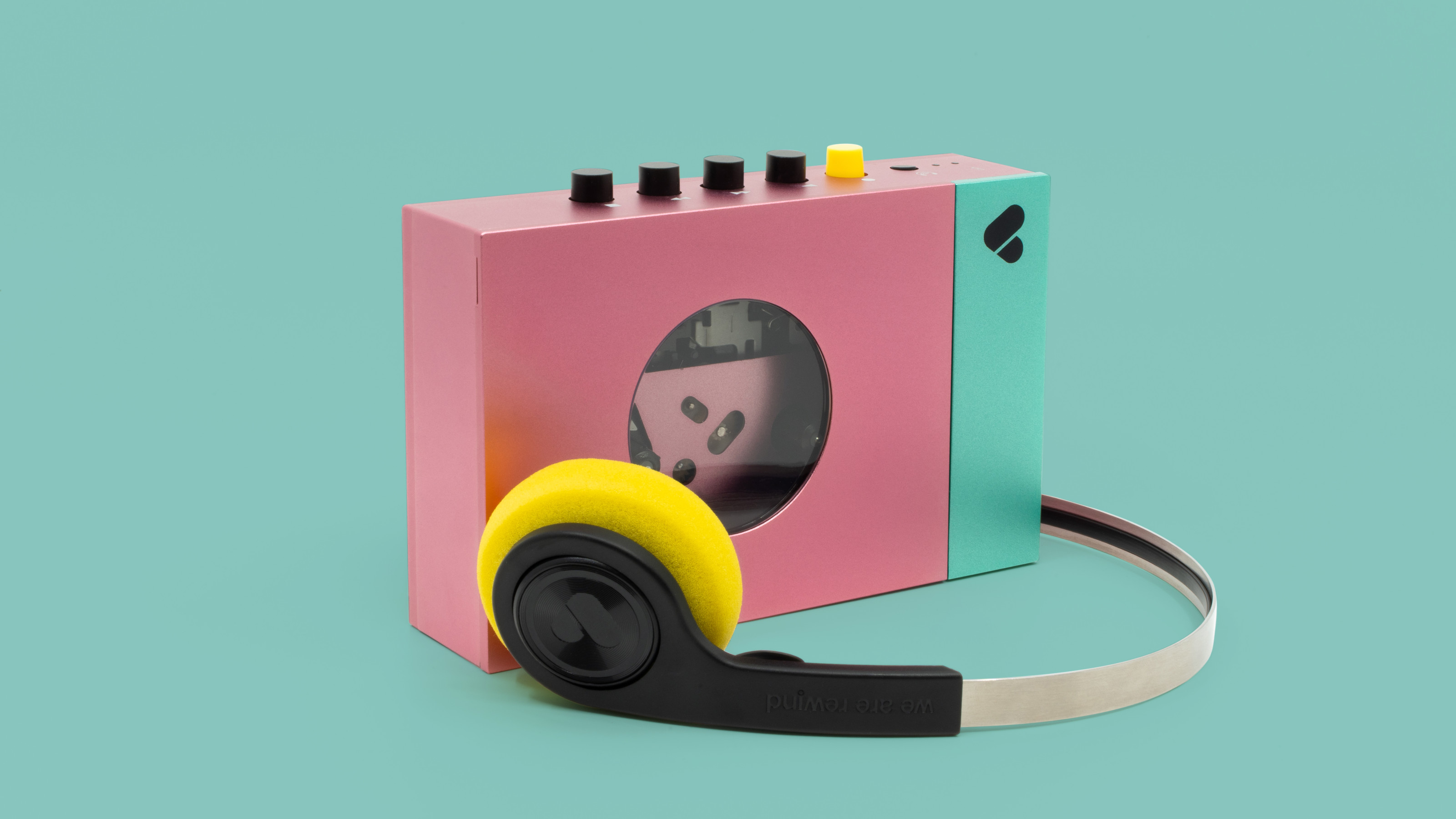 We Are Rewind introduces Edith, the newest edition of its reworked portable audio player
We Are Rewind introduces Edith, the newest edition of its reworked portable audio playerChampions of cassette tape now have another outlet for their analogue fetish. The Edith WE-001 is a recording portable tape player with a bold palette and modern technology
-
 A streamlined new concept cruise yacht creates a sleek boutique hotel that’s all at sea
A streamlined new concept cruise yacht creates a sleek boutique hotel that’s all at seaViken Group’s new REI concept is a superyacht-style ocean-going retreat, a floating palace of wellness and digital detoxing
-
 3D-printed portable toilet ‘The Throne’ offers a snazzier place to answer nature’s call
3D-printed portable toilet ‘The Throne’ offers a snazzier place to answer nature’s call3D-printed from upcycled single-use medical plastic, ‘The Throne’ by To.org and Nagami reinvents the portable toilet and brings an ‘unsexy conversation’ about sanitation to the forefront
-
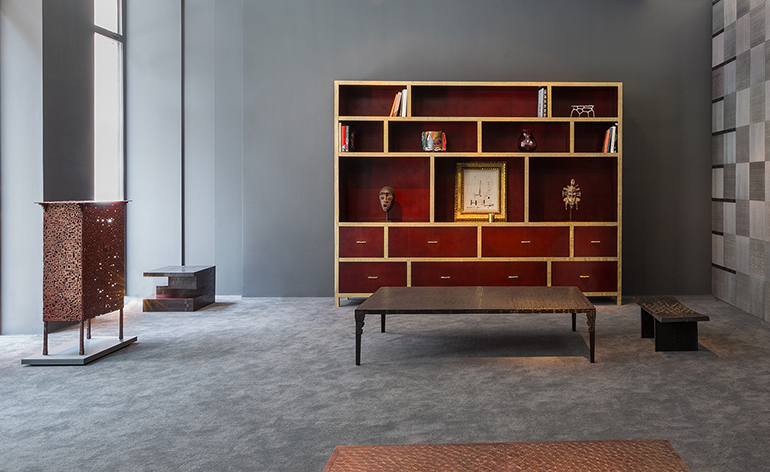 ’Origins’: Ingrid Donat takes over Carpenters Workshop Gallery London
’Origins’: Ingrid Donat takes over Carpenters Workshop Gallery London -
 See shells: Maarten Baas captures the beauty of carapaces in furniture form
See shells: Maarten Baas captures the beauty of carapaces in furniture form